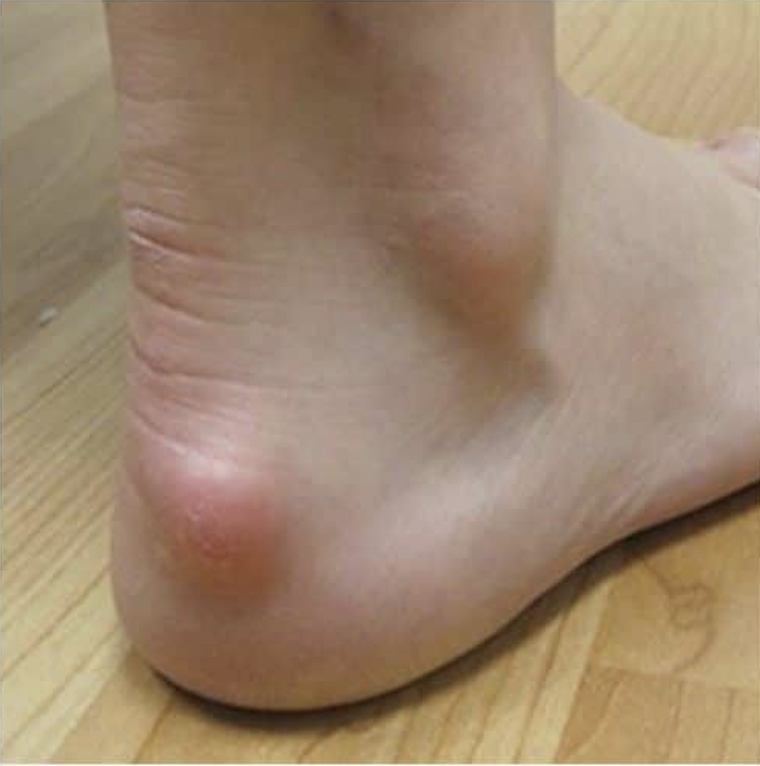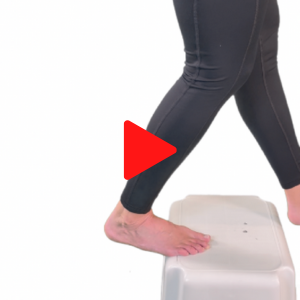Haglund's Deformity: A Chiropractic Treatment Guide
Discovering effective treatments for Haglund's deformity is crucial for individuals experiencing heel pain and related symptoms. Chiropractors play a vital role in diagnosing and managing this condition. This blog will explore the clinical presentation and three chiropractic treatment strategies for Haglund's deformity.
Haglund's Deformity
Haglund's deformity is an enlarged bony section of the heel where the Achilles tendon inserts. Key signs and symptoms include:
A noticeable bump on the back of the heel, sometimes called a (pump bump)
Constant sharp foot pain and heel swelling
Restricted ankle joint mobility.
What Causes Haglund's Deformity
Accurate diagnosis is essential to develop targeted treatment plans and provide relief to patients. There are internal and external factors that may lead to this deformity. Chiropractors can effectively manage Haglund's deformity through conservative measures only once the etiology is determined. Here are three key risk factors leading to this type of heel pathology.
Joint Dysfunction of the foot and ankle
Footwear Selection
Unresolved Achilles Tendinopathy
1. Joint Dysfunction
By identifying and correcting joint dysfunctions, especially deficits in great toe dorsiflexion, or functional hallux limits/rigidus, you can optimize foot biomechanics and reduce friction at the heel. This key contributor exposes the heel to abnormal shearing forces creating or perpetuating Haglund's deformity.
The first ray cut-out is a cut or void in the orthotic material beneath the big toe's first metatarsal head and proximal phalanx. It offloads pressure to the toe and relieves the first MTP joint during gait.
A first-ray cut-out can benefit patients with functional hallux limitus by:
Reducing 1st Ray Joint Compression
Enhancing Great Toe Dorsiflexion
Improving Foot Biomechanics
Aiding in Pain Relief
2. Footwear
Educating patients about proper footwear is crucial. Advise them to wear shoes with adequate space, avoiding tight or ill-fitting footwear with rigid backs or stiff heel counters. Proper shoe wear minimizes pressure and friction on the heel, alleviating discomfort and preventing further aggravation.
High heels can contribute to the development of Haglund's deformity by altering foot mechanics and increasing pressure on the back of the heel. Here's how high heels can create Haglund deformities:
Change in Weight Distribution: Wearing high heels shifts the body's weight onto the forefoot, causing increased pressure on the ball of the foot and the heel. This excessive pressure on the back of the heel can irritate the soft tissues and potentially lead to the development of a bony prominence over time.
Heel Elevation: High heels elevate the heel, which changes the angle at which the foot contacts the ground. This alteration in foot position can increase the friction between the back of the heel and the shoe, further contributing to irritation and inflammation of the tissues surrounding the Achilles tendon insertion.
Shoe Design: High-heeled shoes often have rigid backs or stiff heel counters, leading to chronic irritation. The constant friction between the rigid shoe material and the heel can cause inflammation and promote the formation of a bony enlargement.
Limited Ankle Range of Motion: High heels can restrict ankle joint mobility. The reduced range of motion can affect normal foot biomechanics, potentially leading to altered gait patterns and increased stress on the Achilles tendon and surrounding structures.
Prolonged Wear: Regularly wearing high heels for extended periods places repetitive stress on the foot and Achilles tendon. Over time, this repetitive stress can contribute to chronic inflammation and irritation, increasing the risk of Haglund's deformity.
3. Unresolved Achilles Tendinopathy
Most deformities are due to unresolved or improperly managed insertional Achilles tendinopathy–often misdiagnosed as bursitis. Chronic tendinopathies require calming down the tissue through treatment, then strengthening rehabilitation exercises for the Achilles complex to prevent re-injury. Consider using the condition reference in ChiroUp for the diagnosis and management strategies that work for this often-stubborn diagnosis. Once the pain in the heel subsides, that's when the real work begins. Be sure to follow the following plan for your patient exercise program:
Stretching: Focus on calf muscles and Achilles tendon stretches to improve flexibility and reduce tension. (Sugino et al., 2023)
Eccentric Strengthening: Progress to eccentric exercises like heel drops and calf raises to enhance tendon strength and promote healing. (Ko 2023, Prudêncio 2023)
High-Load Strength Training: Stimulates collagen production expediting recovery for athletes. (Beyer et al. 2015)
A Collaborative Approach
Severe cases of Haglund's deformity may require collaboration with orthopedic specialists. Surgical intervention may be necessary, such as bony protrusion removal or calcaneal osteotomy. As a chiropractor, you can provide pre-and post-operative care, ensuring comprehensive treatment and supporting patients throughout their recovery.
By implementing these chiropractic treatment strategies, you can effectively manage Haglund's deformity and relieve patients experiencing heel pain and related symptoms. You can improve foot biomechanics, reduce friction, and support the healing process through conservative measures, gait evaluation, and targeted rehabilitation exercises.
-
Sugino Y, Yoshimura I, Hagio T, Ishimatsu T, Nagatomo M, Yamamoto T. Effect of Plantar Fascia-Specific Stretching and Achilles Tendon Stretching on Shear Wave Elasticity of the Plantar Fascia in Healthy Subjects. Foot and Ankle Surgery. 2023 Jan 7. Link
Ko VM, Cao M, Qiu J, Fong IC, Fu SC, Yung PS, Ling SK. Comparative short-term effectiveness of non-surgical treatments for insertional Achilles tendinopathy: a systematic review and network meta-analysis. BMC Musculoskeletal Disorders. 2023 Feb 7;24(1):102.
Prudêncio DA, Maffulli N, Migliorini F, Serafim TT, Nunes LF, Sanada LS, Okubo R. Eccentric exercise is more effective than other exercises in the treatment of mid-portion Achilles tendinopathy: systematic review and meta-analysis. BMC Sports Science, Medicine, and Rehabilitation. 2023 Dec;15(1):1-2. Link
Beyer R, Kongsgaard M, Kjaer BH, et al. Heavy, slow resistance versus eccentric training as treatment for Achilles tendinopathy: a randomized controlled trial. Am J Sports Med 2015;43(7):1704-1711.




